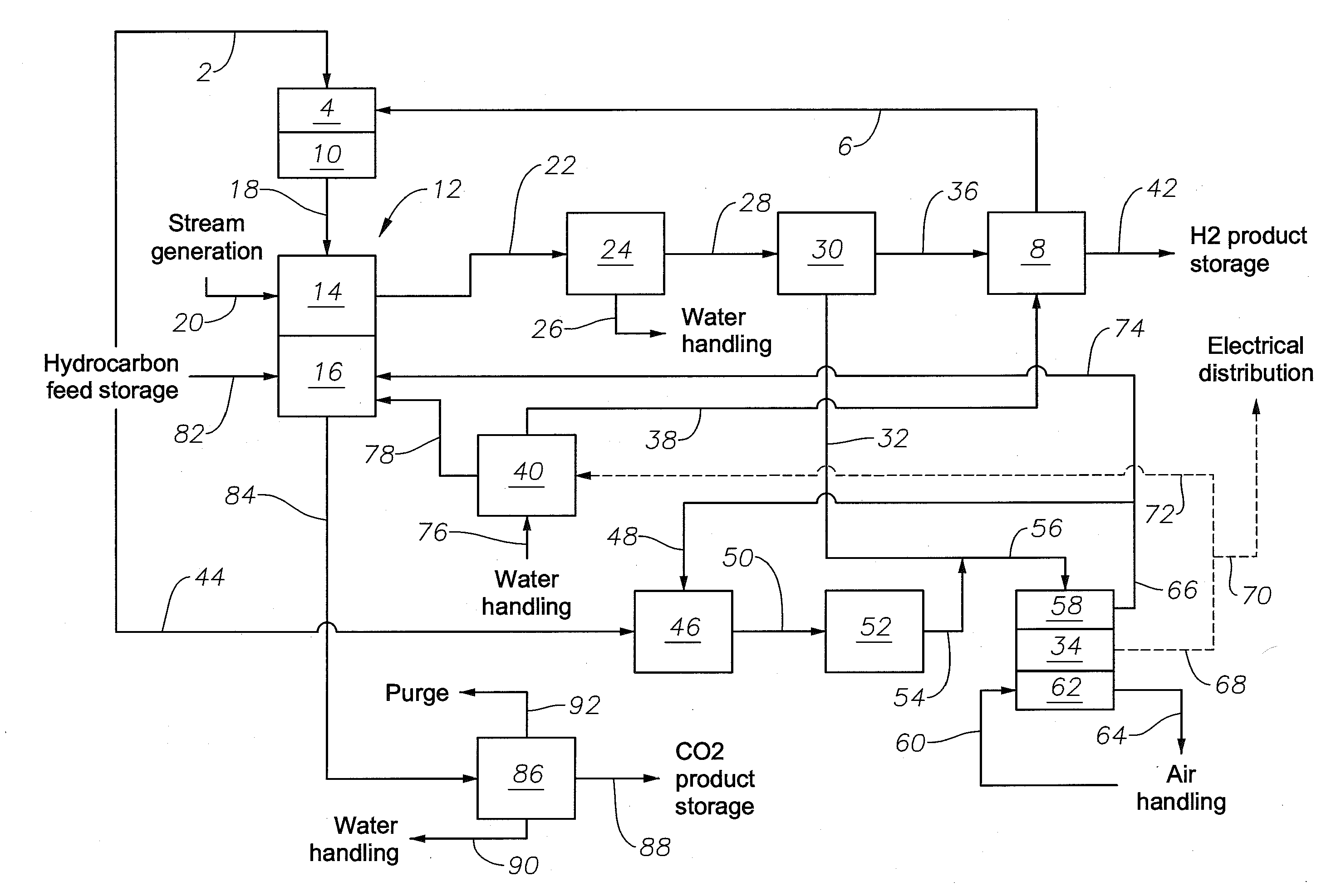Method and a system for combined hydrogen and electricity production using petroleum fuels
a technology of combined hydrogen and electricity production, applied in the direction of hydrogen/synthetic gas production, hydrogen, packaged goods, etc., can solve the problem of high btu transportation cost of hydrogen gas, achieve high quality, reduce transportation infrastructure requirements and costs, and prevent carbon dioxide emissions to the environment
- Summary
- Abstract
- Description
- Claims
- Application Information
AI Technical Summary
Benefits of technology
Problems solved by technology
Method used
Image
Examples
example
[0101]The embodiment of the SOFC system shown in FIG. 1 is configured in AspenPlus® (Aspen Technology, Inc.; Burlington, Mass.), a chemical process simulator, runs two different types of vaporized liquid hydrocarbon feed stocks: naphtha and kerosene. Process simulation using the SOFC system shown in FIG. 1 produces 250 Nm3 / hr of hydrogen suitable for use in HFCVs (+99.99 molar percent purity) as well as provide at least 370 kW of electrical power for EVs. Table 1 gives the results of the simulations.
TABLE 1FIG. 1 simulation results for naphtha and kerosene hydrocarbon fuel.FIG. 1 Co-production StudyUnitsNaphthaKeroseneFuel BalanceTotal Fuel Introducedkg / hr218.6218.8Total Fuel Introduced (HHV)GJ / hr1010.1H2 BalanceGross GenerationNm3 / hr265264Consumption:To DesulfurizerNm3 / hr22To Reformer FurnaceNm3 / hr1313Total H2 Internal ConsumptionNm3 / hr1514Net H2 for ExportNm3 / hr250250CO2 Capturedkg / hr619.9620.5Power BalanceGross GenerationkW12721270Total Auxiliary Power ConsumptionkW902899Net Expo...
PUM
| Property | Measurement | Unit |
|---|---|---|
| pressure | aaaaa | aaaaa |
| temperature | aaaaa | aaaaa |
| temperature | aaaaa | aaaaa |
Abstract
Description
Claims
Application Information
 Login to View More
Login to View More - R&D
- Intellectual Property
- Life Sciences
- Materials
- Tech Scout
- Unparalleled Data Quality
- Higher Quality Content
- 60% Fewer Hallucinations
Browse by: Latest US Patents, China's latest patents, Technical Efficacy Thesaurus, Application Domain, Technology Topic, Popular Technical Reports.
© 2025 PatSnap. All rights reserved.Legal|Privacy policy|Modern Slavery Act Transparency Statement|Sitemap|About US| Contact US: help@patsnap.com


